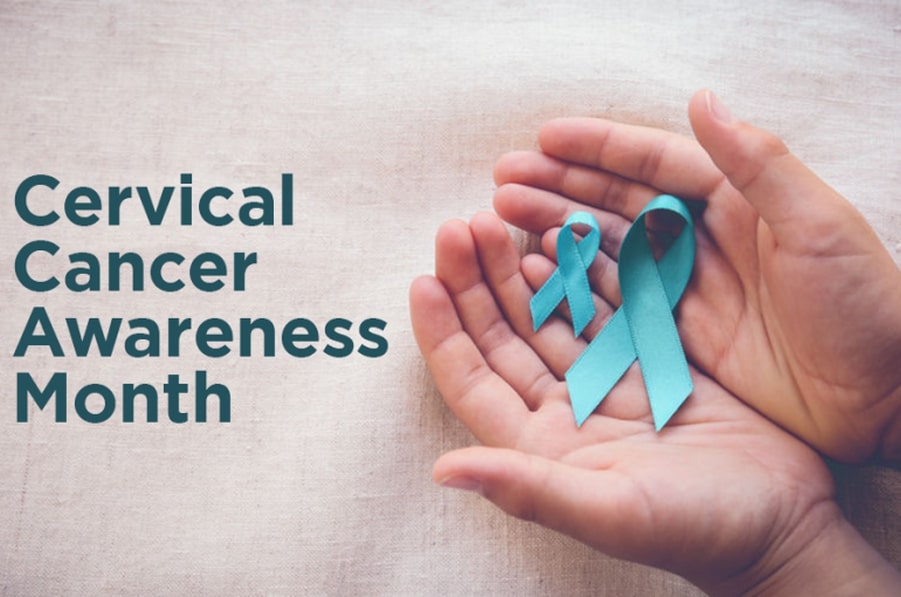Overview
Welcome to January, a month dedicated to raising awareness about a critical aspect of women’s health—Cervical Cancer Screening. Cervical Cancer Screening Awareness Month aims to empower individuals, educate communities, and elevate the importance of regular screenings in the fight against cervical cancer. In this blog, we’ll explore the significance of cervical cancer screenings, dispel myths surrounding them, and encourage everyone to take charge of their health.
Cervical cancer is a type of cancer that occurs in the cells of the cervix, which is the lower part of the uterus. The primary cause of cervical cancer is persistent infection with high-risk types of human papillomavirus (HPV). HPV is a sexually transmitted infection, and certain strains of the virus can lead to changes in the cervical cells that may eventually develop into cancer.
Causes
The main cause of cervical cancer is infection with high-risk HPV. Most HPV infections are temporary and resolve on their own, but persistent infection with high-risk types can lead to the development of cervical cancer over time. Other risk factors include smoking, a weakened immune system, long-term use of birth control pills, multiple pregnancies, and a family history of cervical cancer.
Cervical cancer is a global health concern, and its prevalence varies by region. According to the World Health Organization (WHO), cervical cancer is the fourth most common cancer in women worldwide. The majority of cervical cancer cases and deaths occur in less developed regions, where access to screening and vaccination may be limited.
Statistics
In 2020, there were an estimated 604,127 new cases of cervical cancer worldwide, with 341,831 deaths.
In developed countries, organized screening programs and HPV vaccination have contributed to a significant reduction in cervical cancer cases.
Developing countries, however, face challenges such as limited access to screening, healthcare resources, and awareness.
The Role of Cervical Cancer Screenings
Cervical cancer screenings play a crucial role in early detection and prevention of cervical cancer, allows for timely intervention and treatment, significantly improving the chances of successful outcomes. Two primary screening methods for cervical cancer are Pap smears (Pap tests) and HPV tests.
Pap Smears (Pap Tests):
Purpose: Pap smears are designed to detect abnormal changes in the cells of the cervix before they develop into cancer. The test can identify precancerous or cancerous cells, allowing for prompt medical intervention.
Procedure: During a Pap smear, a healthcare provider collects a small sample of cells from the cervix. These cells are then examined under a microscope for any abnormalities.
HPV Tests:
Purpose: Human Papillomavirus (HPV) is a common sexually transmitted infection that can lead to cervical cancer. HPV testing is designed to identify the presence of high-risk HPV strains that are associated with an increased risk of cervical cancer.
Procedure: Similar to a Pap smear, an HPV test involves collecting a sample of cells from the cervix. The sample is then tested for the presence of high-risk HPV DNA.
Frequency: HPV testing is often performed in conjunction with Pap smears for women aged 30-65. If both tests are negative, the screening interval may be extended to every five years.
Conclusion:
In conclusion, the significance of cervical cancer cannot be overstated. This devastating disease takes a toll on millions of lives worldwide, affecting not only the individuals diagnosed but also their families and communities. However, the importance of understanding and addressing cervical cancer lies not just in its prevalence but in the potential for prevention and early detection.
Cervical cancer is largely preventable through vaccination against human papillomavirus (HPV), the primary cause of cervical cancer, and regular screenings such as Pap smears and HPV tests. By promoting awareness and encouraging widespread vaccination and screening programs, we can significantly reduce the incidence of cervical cancer and save countless lives.
Remember, awareness is the first step towards prevention, and by spreading knowledge, we can make a meaningful impact on the fight against cervical cancer. Together, let’s empower, educate, and elevate the importance of cervical cancer screenings throughout January and beyond.


